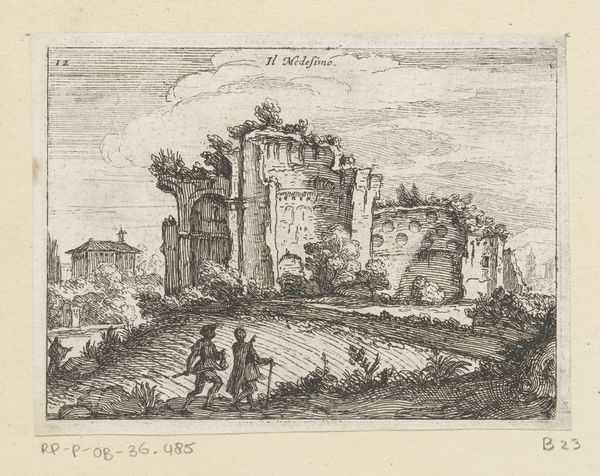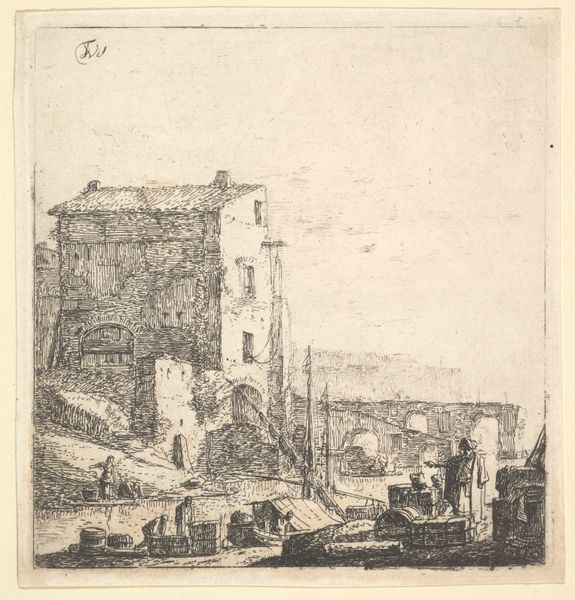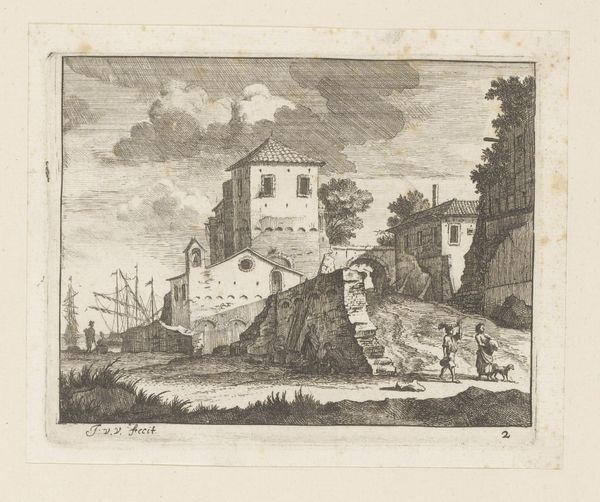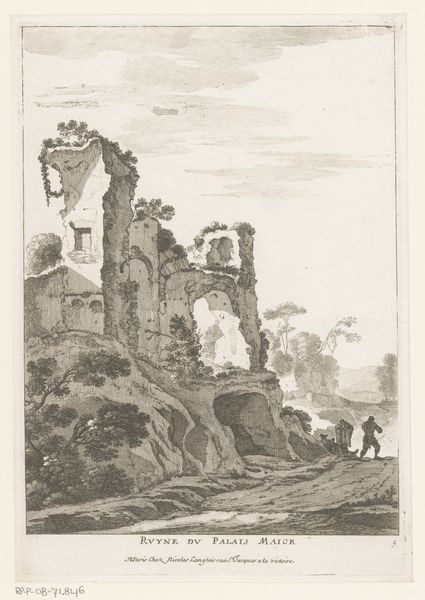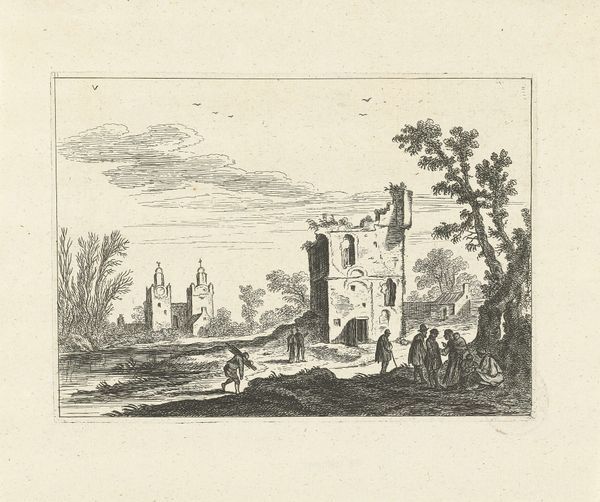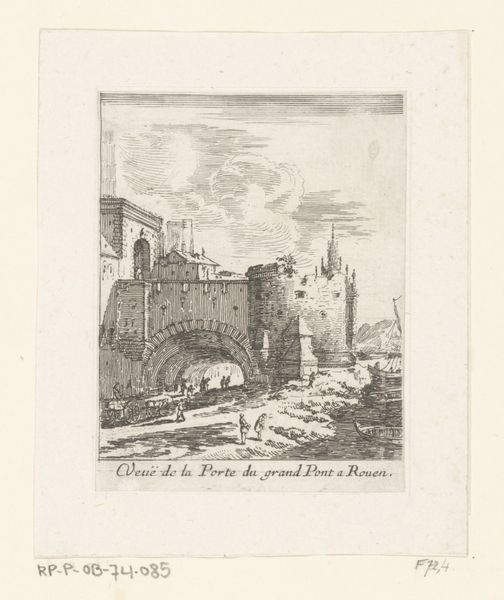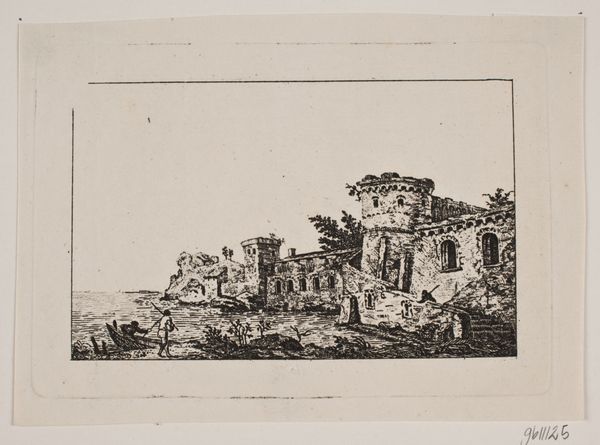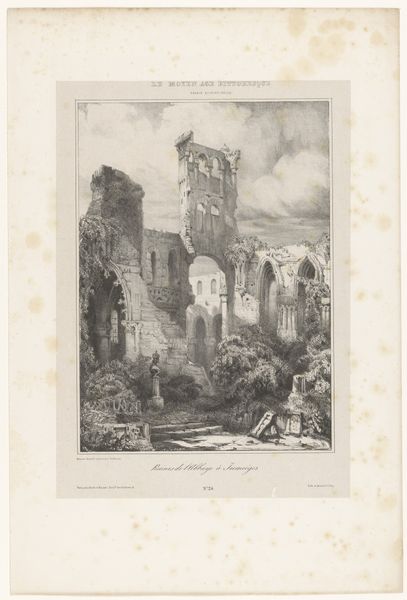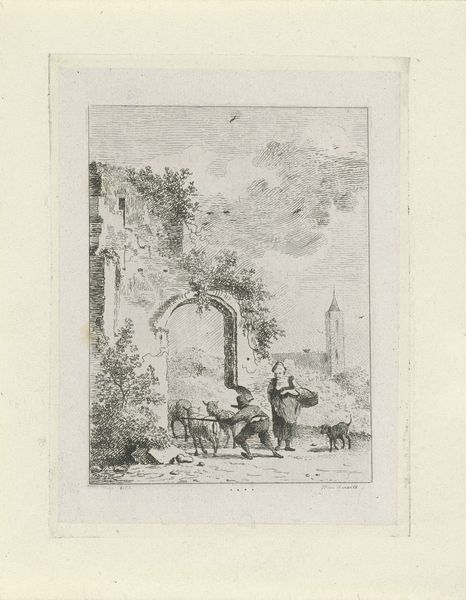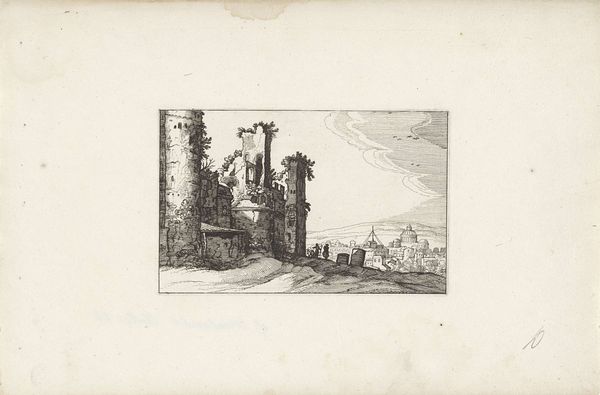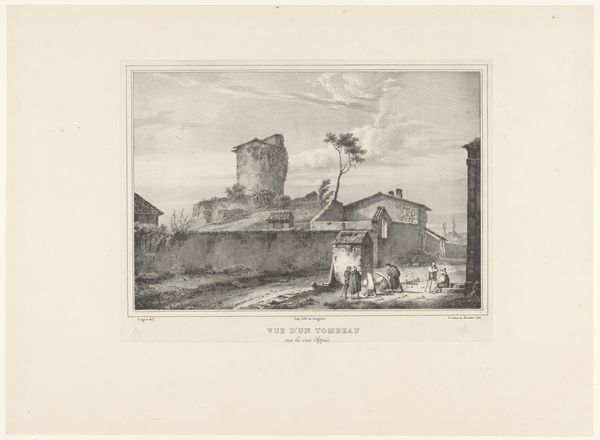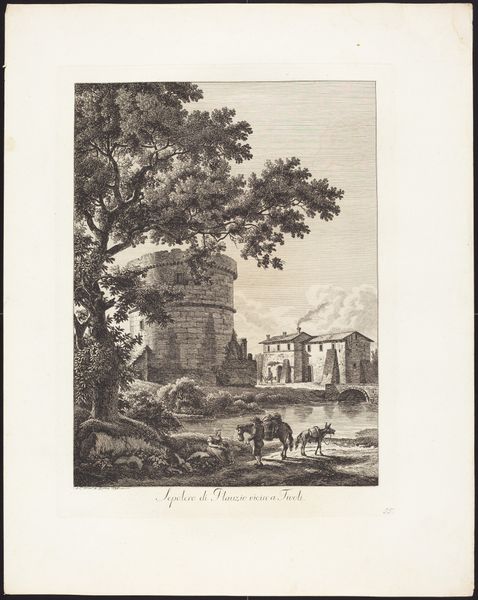
Dimensions: height 111 mm, width 83 mm
Copyright: Rijks Museum: Open Domain
Curator: Here we have Jan Izaak van Mansvelt's etching, "Herder met schapen bij een dorp," likely created between 1771 and 1802. It depicts, as the title suggests, a shepherd with sheep near a village. Editor: My first impression is of delicate work. The etching technique really shines through, giving a lightness and a touch of romantic melancholy to this scene. The buildings appear worn, blending into nature with overgrown vines and shrubbery. Curator: Absolutely. Mansvelt employs line with masterful precision to generate tone and texture. The scene, rendered in monochrome, focuses attention on the meticulous composition. Observe how the arrangement of the sheep draws the eye through the pictorial plane, subtly guiding our vision to the architectural ruins beyond. The line work emphasizes the textures. Editor: Yes, I also immediately notice the emphasis on decay and texture—that tension speaks volumes about the human impact on the environment and how nature reclaims what we leave behind. Also the physical act of etching requires skill. I am interested in the copper plate it was printed from—what labor and tools where used? Curator: That is a very pertinent observation. Consider that his strategic layering evokes an evocative atmosphere, which, by extension, is representative of the romantic ideal celebrating the sublime. Note the small figure sitting on top of the gate: with his gaze on the shepherd and sheep. Editor: How the scene has genre-painting roots as well as the larger economic and societal role of the shepherd and the sheep, what material goods they may offer or produce? Curator: Indeed. The artwork transcends its seemingly simple pastoral depiction. The convergence of nature and the past provides a sense of nostalgic beauty. It is more than merely a quaint pastoral image; it evokes a reflective and elegiac mood. Editor: Agreed. Analyzing the work through material lenses adds dimension to appreciating its formal achievements, recognizing how physical resources affect art. Curator: It underscores the complex relationship between the artwork as an object of aesthetic contemplation and the societal fabric from which it emerged. Editor: This approach illuminates the artwork's narrative potential far beyond just its formal and thematic elements. Thanks for bringing it to my attention.
Comments
No comments
Be the first to comment and join the conversation on the ultimate creative platform.
